外文傳媒New Bloom報導松菸121天的護樹行動,有兩句話真的說對了,要劃重點,一個是『更結構性的來看,這個議題也反應著台灣這幾個月躍上檯面的民主問題:台灣政府常常不顧一切,罔顧民意,為了經濟發展犧牲環境等其他問題。』
另外一句話是『但我確信著,只有把人民從冷漠中喚醒,他們才有可能成功。』!
話說回來會造成長期抗爭的原因是很瞎的,全世界各地都有為保護樹木抗爭的行動,德國最近的一次守護森林行動長達9個月,俄羅斯的希姆基(Khimki)森林護樹長達3年,不知道松菸能不能打破世界紀錄,就得看『遠雄市政府』的態度來決定了。
這時候不忍悲歎的是,即使在極權國家中國南京發生的『梧桐樹事件』人家可是五天的時間官方就出來道歉,說建設的時候沒有『以路就樹』是錯的,願意好好改進。
我們台灣則是有個『遠雄市政府』的議員王正德覺得『以路就樹』是『大笑話』,而郝龍斌到現在不肯道歉,還派警察趕人哩。
以下是New Bloom的報導,他有稍微批評一下.....請點選連結自己看了!
中文翻譯:連結: http://goo.gl/z1E91m
松煙護樹的121天
松煙護樹在持續了121天後,面臨了極大的挑戰,凌晨兩點多,突然有四十至五十名警力集結開始驅離,原本駐紮的帳篷和器材被拆掉,放到三部卡車上載走,大約兩點半整個營地已經被清空。當時有五個人住在帳篷中,當筆者約莫三點到達現場時,大約已經有二十左右的朋友聚集,大部分是台灣護樹團體聯盟的成員。可能是因為時間很晚了,護樹聯盟也無法即時回應,社群網路上面並沒有太多的消息,所以除了聯盟之外並沒有太多人響應,除了我以外沒有其他記者,包括中文媒體,大部分的中文媒體都是在事發之後透過從社群網站上收集資訊及訪問成員得到資訊。
警力集結開始驅離。圖片:公民記者豪豬台
佔領者所住的帳篷是在佔領最初三天後就蓋好,裡面包含著日常所需用品,例如讓佔領者度過炎炎夏日的風扇等等,警察驅離完後,只剩兩個手提式發電機留在現場。當我到達現場時,佔領者似乎已經達成共識:必須繼續佔領,否則只能眼睜睜的看著這些樹被砍掉,只是現在必須思考怎麼繼續下去,且不會讓他們的財產一直被扣押。
現場的三點半。圖片:丘琦欣
當天的氣氛非常緊張,但是還是充滿歡樂,雖然不斷和警察有衝突,佔領者仍維持著幽默感。凌晨四點左右,大部分的佔領者離開了現場前往信義派出所,留下兩個人看管物品。佔領者不斷向警察爭論著,要求知道他們被扣押的物品在哪裡,要求警察說明法律授權依據,和驅逐的理由。其中一個佔領者跟我說到,如果擁有者不在場,警察可以合法的移除他們認為是垃圾的物品,但在這次事件中,警察踰矩了。
信義的警察局外面。圖片:丘琦欣
面對這些質疑,警察並沒有被動搖,重訴著813時提出815前要停止佔領的警告,他們剛開始不願意回答在驅逐行動中被清除的物品被移到何處,後來告訴我們被移到福德路和信義的警察局,並且我們可以去取回所有東西。
圖片:丘琦欣
大約4點16分時,一個警察(看起來不是長官或發言人)要求佔領者離開警察局,4點40分時警察開始試圖趕走佔領者,跟他們說如果要表達訴求,請報案。4點50分時大部分的佔領者已經離開警察局,剩下幾位留在警局和警員協商。當佔領者拿起攝影機拍下警察的行為時,警察的回應是也拿起攝影機,仔細的拍下每一個佔領者。
4點40分時警察開始試圖趕走佔領者,跟他們說如果要表達訴求,請報案。圖片:丘琦欣
在派出幾個人確定他們的器材和財產真的在那後,佔領者從信義派出所移動到福德路警局,在那邊佔領者開始確認器材,把原先打包的箱子打開,確定每一項東西符合清單,花了一段時間後,佔領者決定把東西移回原先的佔領處並且重新紮營。雖然這個決定是大家默許的,我記得其中一個較年長的佔領者在警察局時表達了反對的意見,但也許佔領者會這麼想回去,是因為那塊空間對整個佔領行動來說非常重要,而且在佔領這麼長一段時間後,大家對那邊也有了很深的感情,如果沒有跟環境連結,整個行動就好像失去了什麼。
當佔領者拿起攝影機拍下警察的行為時,警察的回應是也拿起攝影機,仔細的拍下每一個佔領者。 圖片:丘琦欣
在我約三點左右到達時,我訪問了台灣護樹團體聯盟的發言人潘翰疆,他的訪問多少解釋了整個佔領的動機。
「你覺得這些樹在整個佔領行動裡代表了什麼?尤其是對那些不理解脈絡的國際讀者來說。這是個保存的問題,因為在台北有歷史或老東西常常因為都市更新或商業開發而被抹滅。」我問
信義的警察局外面的日出。 圖片:丘琦欣
他回答著:「這其實不是台北唯一的例子,不只松煙,當土地被拿來開發的時候,這種事情就會發生,例如華光社區、士林王家等等。」據潘大哥所說,全台灣目前至少有二十到三十個護樹行動。
雖然都市發展是社會運動者長期關注的議題,護樹行動仍然是之中比較特殊的。在松煙佔領行動剛開始時,其實筆者還蠻訝異為了建設把老樹移除這件事情,可以引發且支持一個長期的佔領。不過確實,其中一部分跟遠雄集團為了建設台北大巨蛋行賄,並且找了幫派恐嚇這些行動者,並為了節省成本用非法的方式砍樹有關。更結構性的來看,這個議題也反應著台灣這幾個月躍上檯面的民主問題:台灣政府常常不顧一切,罔顧民意,為了經濟發展犧牲環境等其他問題。
不過護樹行動也反應了台灣公民社會的一些特色,這些樹真的能變成台灣社會在乎的議題,別的國家往往忽略無視的議題,在台灣卻能舉國討論。
福德路警局。圖片:丘琦欣
福德路派出所就在公園旁邊,在漫長的打包整理器材的過程中,我見證了台北市漸漸的甦醒,有次早晨散步的老婦人走過,問到說我們在做什麼,佔領者爽朗的回答:「我們在搬家」,甚至連有些警察都在旁邊看著這些佔領者在做什麼,一邊訕笑著。
許多老人漸漸在公園聚集作操,對比著年輕的佔領者正在整理他們被警察擾亂的營地,這就好像反應著台灣社會運動真實的處境,社會每天不斷的依循某種韻律進行,但同時有群人不斷的試圖改變社會,讓社會更好—但他們常常被忽略。
圖片:丘琦欣
儘管如此,因為緊接在太陽花學運之後,松煙的佔領仍得到了許多注目,但也漸漸的消散於鎂光燈之下。雖然這個佔領行動使得台灣護樹聯盟的朋友建立了很強的情感連結,但我仍然擔心這麼小群人可能沒辦法一直撐下去。
右邊的貨車運東西回松煙。圖片:丘琦欣
我在七點多時離開,第一批貨物已經打包好,準備運回松煙,佔領者準備把東西運過去,休息一下,然後把東西拆箱,討論媒體策略,重新部署佔領的營地。有人說著,在佔領的前三天根本沒有營地,他們只能睡在路邊,現在的狀況就像是回到最初一樣。
他們能夠從無到有,重新佔領嗎?他們最終能夠成功嗎?當我看著他們,我實在不知道,但我確信著,只有把人民從冷漠中喚醒,他們才有可能成功。
Brian Hioe (丘琦欣) is a freelancer currently based in Taipei, he will be starting an M.A. in East Asian Languages and Culture at Columbia University in Fall 2014.
翻譯者:葉俊廷
http://newbloommag.wordpress.com/2014/08/22/the-121st-day-of-the-songyan-occupation/
The 121st Day of the Songyan Occupation
From Occupation to Reoccupation?
by Brian Hioe
語言:
English /// 中文
English /// 中文
ON ITS 121ST DAY, the longstanding Songyan occupation, protesting the unlawful cutting down of trees in the area outside the site of the future Taipei Dome, near Songshan Cultural and Creative Park, faced its greatest tribulation to date. A police raid upon the occupation encampment was conducted at 2 AM which, according to those present, brought in approximately forty to fifty police officers.
Three cleaning squads were deployed and the occupation encampment was broken up; its tents and equipment were dismantled, then loaded into three trucks and driven off into processing. By 2:30 AM, the encampment had been completely taken apart.
Police dismantling the Songyan occupation. Photo credit: 公民記者豪豬台
At the time, five people were on site in the tent that occupiers had been residing in for some time since the beginning of the occupation on April 25th of this year. When the author arrived at approximately 3:00 AM, twenty people had gathered, largely consisting of the members of the Taiwan Tree Protection Coalition (台灣護樹團體聯盟) responsible for maintaining the occupation.
It may have been a result of the late hour or the fact that by the time coalition members could respond the occupation was entirely dismantled, but few call-outs were made via social media. So it appears that few of those who were not members of the Taiwan Tree Protection Coalition mobilized as a response. No journalists apart from myself were on site, Chinese language media included; only later did the media respond, largely attempting to gather details through social media and conducting interviews after the fact.
Occupiers at approximately 3:30 AM. Photo credit: Brian Hioe
The tent that occupiers had been residing in was erected after the first three days of the occupation and housed the everyday necessities that occupiers required to maintain inhabitable living conditions for the encampment. For one, fans, given the heat of summer through which occupiers had nonetheless sustained itself. But after police had finished, two portable generators were the only equipment that was not seized.
THE CONSENSUS AMONGST occupiers seemed to have already been settled by the time I arrived: the occupation must be maintained, or else the trees they had spent to much time protecting would be cut down without resistance. What remained was to figure out how to do so and how to not let the seizure of their property pass by without registering dissent.
The atmosphere on site was tense in the wake of the eviction but remained cheerful. Even in the confrontations with police that followed, humor remained a constant among occupiers.
Outside the Xinyi Precinct Taipei City Police Department. Photo credit: Brian Hioe
At about 4:00 AM, the majority of occupiers left the occupation site, with two people left behind to keep an eye on things, to gather at the Xinyi Precinct Taipei City Police Department. A verbal confrontation with the police ensued for the next hour, with occupiers demanding to know where the encampment equipment had been moved to, under what legal pretense did the police take action, and also expressing more generally their motivations for maintaining their eviction. As one of the occupiers told me in conversation, the police are legally entitled to remove what is deemed “litter” or “garbage,” but not if the owner is present. In this case, supposedly the police would have overstepped their boundaries.
Verbal confrontation with police spokesman. Photo credit: Brian Hioe
Police officers generally remained unmoved by these more abstract complaints, citing a warning given on August 13th that the occupation needed to be removed by August 15th. They were at first unwilling to reveal where the equipment from the dismantled occupation had been moved to, but police officers eventually revealed that it had been moved to the Fude Road Police Station, also in Xinyi, and that occupiers could go there to recover everything.
This was not without incident. At approximately 4:16 AM, an officer, though not the leading spokesman of the police, demanded that the occupiers leave the station. At 4:40 AM, officers began to attempt to remove occupiers from the station, stating that if occupiers wished to register their complaints, they would have to do so and leave. By 4:50 AM, occupiers had been removed from the station, except for several spokespersons who were allowed to remain within to negotiate with officers. While occupiers had been careful to film policemen in order to monitor their behavior, police officers later responded in kind by filming all of the occupiers present, carefully recording each and every one of their images on video.
Officers beginning to attempt to remove occupiers from the station at 4:40 AM or so. Photo credit: Brian Hioe
After first sending someone to confirm that their equipment and property was indeed there, occupiers moved from the Xinyi Precinct Taipei City Police Department to the Fude Road Police Station. From there, occupiers began the process of moving their equipment back to the former site of the occupation encampment, opening up the boxes their equipment had been packed into, checking that the police had in fact registered correctly the contents, then loading everything into the one truck that they had on hand. This would be a process that would take some time. Nevertheless, after recovering their equipment and property, the occupiers intended to go back to Songyan and rebuild their encampment—which appeared to be tacitly agreed upon, without need for debate.
I recall an older man who was with the occupiers but also expressed some disagreement with other occupiers. The occupier who were arguing with police in the police station loudly stated at one point that he was there for the trees, the police might as well keep everything else. But perhaps why occupiers were so intent on reclaiming their equipment and property is because of how the occupied space had become something precious to occupiers in and of itself. After inhabiting that space for so long in their occupation, it would be hard not to feel attached to the physical environment of the occupation itself. The dismantlement and removal of the occupation, then, could only be experienced as a wound might be.
Police recording everyone present on film. Photo credit: Brian Hioe
UPON INITIALLY ARRIVING on site at 3 AM, when the eviction was still a very fresh wound, I interviewed Taiwan Tree Protection Coalition spokesman Pan Han-Chiang. His comments proved elucidating about the motivation of occupiers.
“What do these trees represent for you in regards to this occupation?” I asked. “Especially for international readers that may not know contextual information. Would say it’s a question of preservation, in regards to that in Taipei, what is old or has history is dismantled for the sake of urban renewal or commercial development?”
“Well,” said Pan, “this is not the only example in Taipei, it’s not just Songyan. When there is land which can be used for development, this happens.” Pan went on to cite several examples in Taipei, including the Huaguang Community, and the demolition of the Wang family home in Shilin. According to Pan, while in Taipei there is Songyan, among others, in the entire country of Taiwan, there are twenty to thirty tree protection activities concerning the preservation of trees with history.
Dawn outside Xinyi Precinct Taipei City Police Department. Photo credit: Brian Hioe
Nevertheless whereas urban redevelopment has largely been a major issue among activist groups, it would appear that the issue of tree preservation is quite specific. Around the beginning of the Songyan occupation, it came as a matter of some surprise to the author that the matter of trees with historic value being cut down for the sake of future construction could in fact become one which concerned activists across the country and, in fact, be sufficient cause to maintain a longstanding occupation.
Certainly, part of the issue would seem to be the Farglory Construction Company building the Taipei Dome’s use of bribes to secure contracts, employment of gangster violence to intimidate critics such as the Songyan occupiers, and its cutting down trees as a illegal cost-cutting measure. In terms of more structural causes, the issue would be Taiwan’s longstanding question of democracy that has taken center stage in recent months, whereby the Taiwanese government often blatantly defies the popular will where it looks like there might be an economic opportunity—no matter what the costs might be otherwise for Taiwan’s environment or for the Taiwanese people.
Yet the issue of trees in Songyan would also reflect something quite particular about Taiwanese civic society. That trees can, in fact, become something concerning of all of Taiwanese society. That Taiwan is a society in which there is such concern with social issues that what would go by without blinking in another society can become a national issue.
Occupation equipment packed into boxes at Fude Road Police Station. Photo credit: Brian Hioe
AS THE FUDE ROAD POLICE STATION is located next to a public park, during the long process of unpacking and repacking equipment and property through the early morning hours, I witnessed the rather strange juxtaposition of Taipei waking up and going through its early morning motions with the occupiers as they were rummaging through and sorting out their belongings.
At one point an old woman on her early morning walk cut in and asked what everyone was doing. “We’re moving house!” one of the occupiers shouted cheerfully in response. Even some of the police officers standing by, watching the occupiers’activities, laughed at that.
Yet I watched Taipei’s elderly gather for yoga in the park, largely indifferent to the younger people sorting through their dismantled occupation, I could not help but feel that this reflected something about the plight of Taiwanese activism more generally.
Tai Chi in the park, Songyan occupiers unpacking in the background. Photo credit: Brian Hioe
Society at large goes on with its everyday, quotidian routines. At the same time, there are groups of highly motivated individuals goes on trying to change society for the better constantly working—but they are sometimes ignored, or their actions fade invisibly into the background.
The Songyan occupation received a lot of attention immediately after the Sunflower Movement, but it hadn’t been in the spotlight for some time. While the occupation would seem to have created close ties of camaraderie between the members of the Taiwan Tree Protection Coalition, it would not surprise me, either, if with that small amount of people, they sometimes have trouble maintaining the encampment site.
When I left around 7 AM, the first load had been packed into the truck on hand and it was set to depart for Songyan once more. The intension of occupiers at that point in time was to move all their equipment back to Songyan, sleep, then unpack everything from the boxes it had all been packed into, contemplate media strategies, and rebuild their occupation. Back to the beginning it was, said some. Because for the first three days of the occupation, there was no encampment, and they just slept on the side of the road.
The first truckload of occupation equipment heads back to Songyan. Truck on far right. Photo credit: Brian Hioe
Will they succeed in reestablishing their occupation, beginning again from scratch? Will they be able to succeed in the long-term? I could not come to any conclusion as I watched them do so. But, I thought to myself, it will certainly depend on arousing the public from the apathy of the everyday if they are to succeed.
Brian Hioe (丘琦欣) is a freelancer currently based in Taipei, he will be starting an M.A. in East Asian Languages and Culture at Columbia University in Fall 2014.
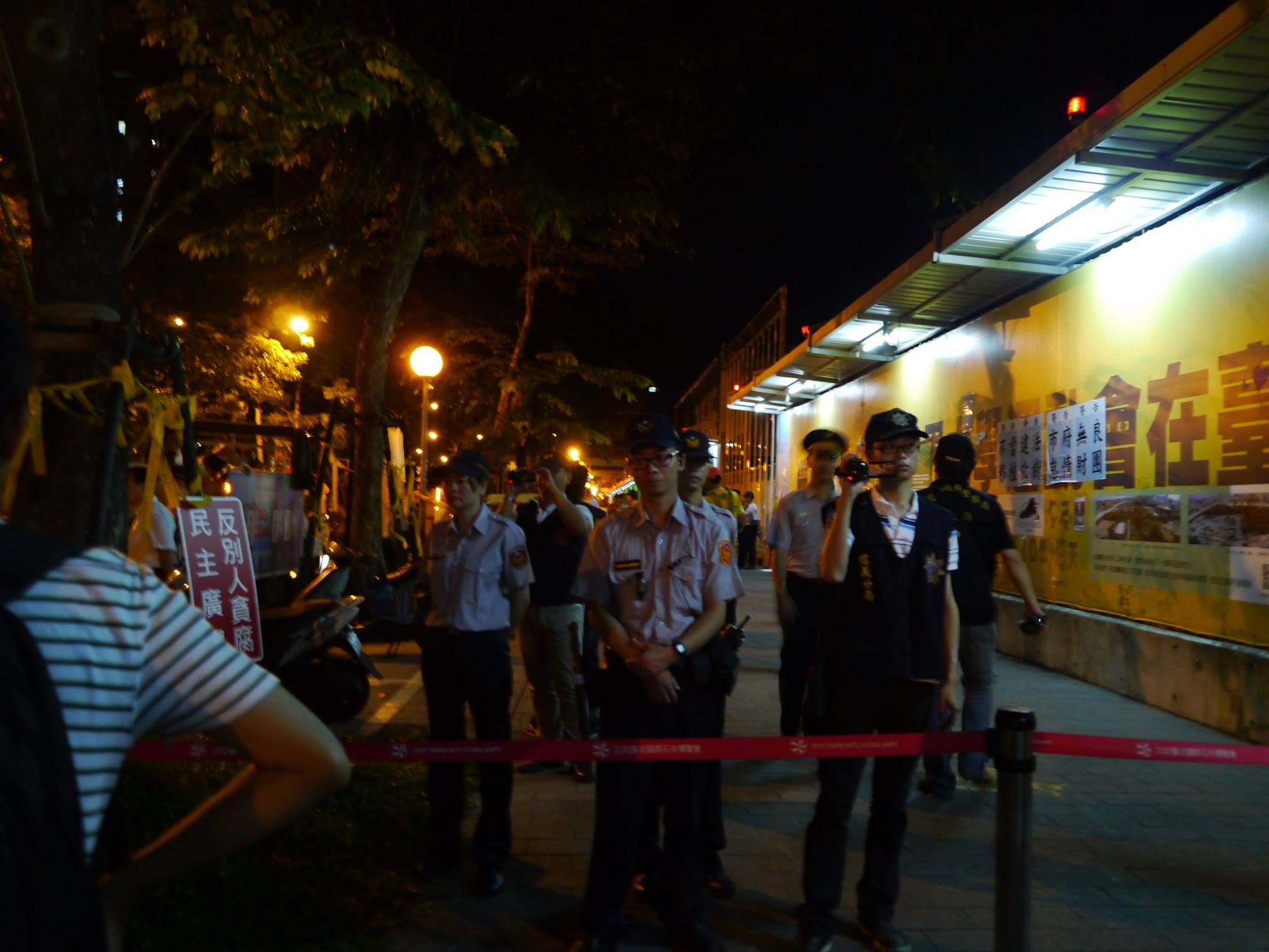

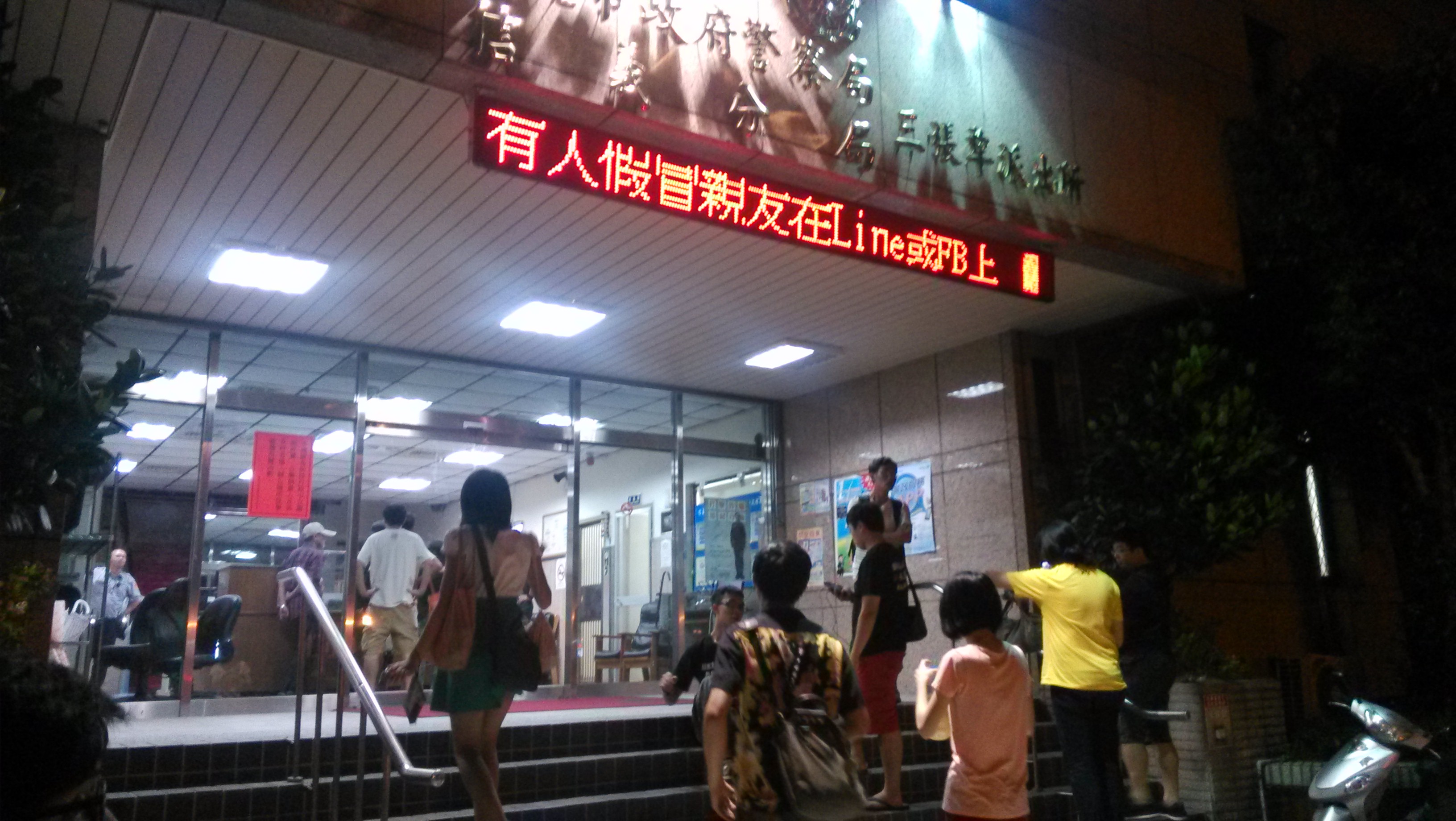
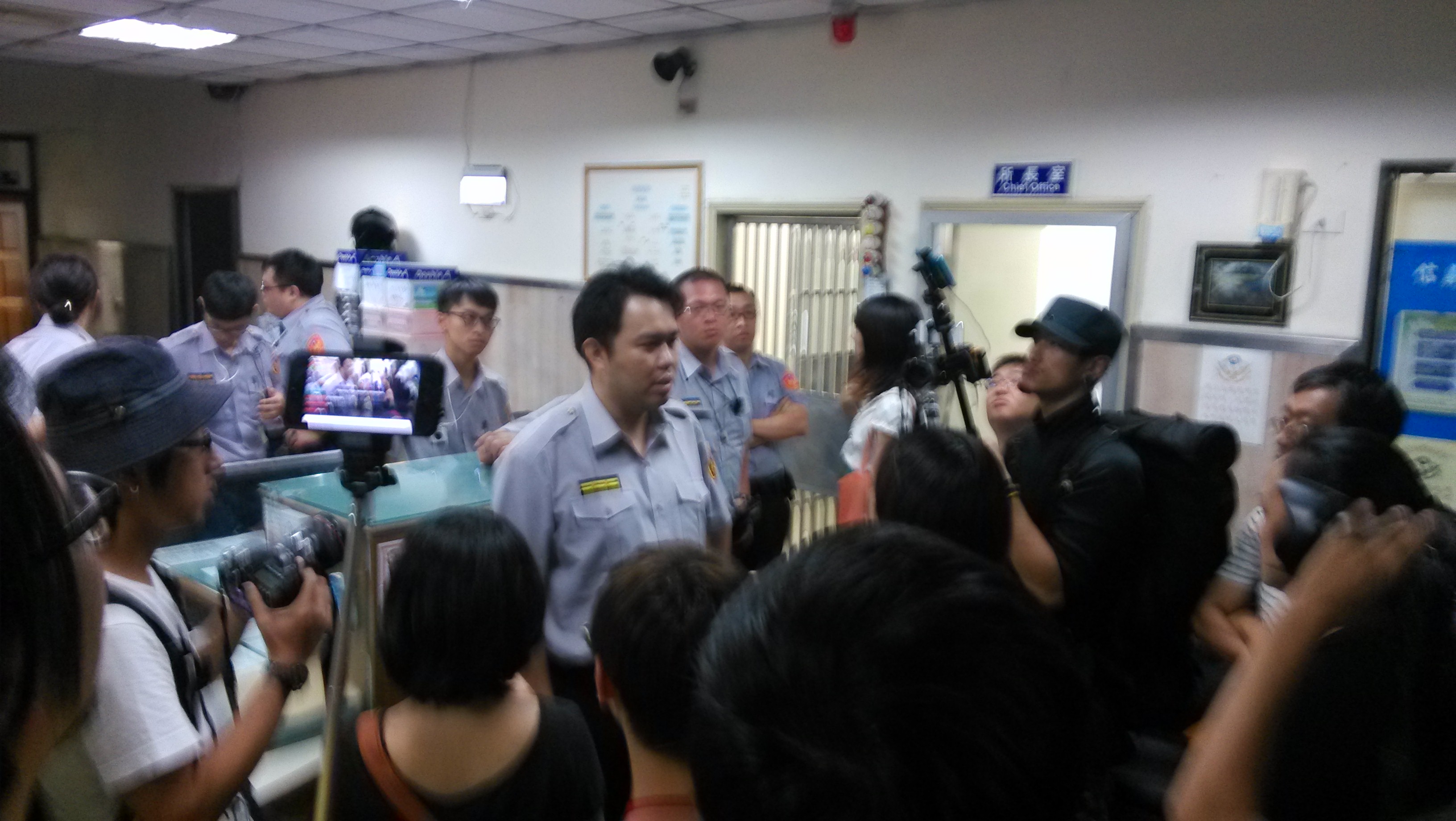
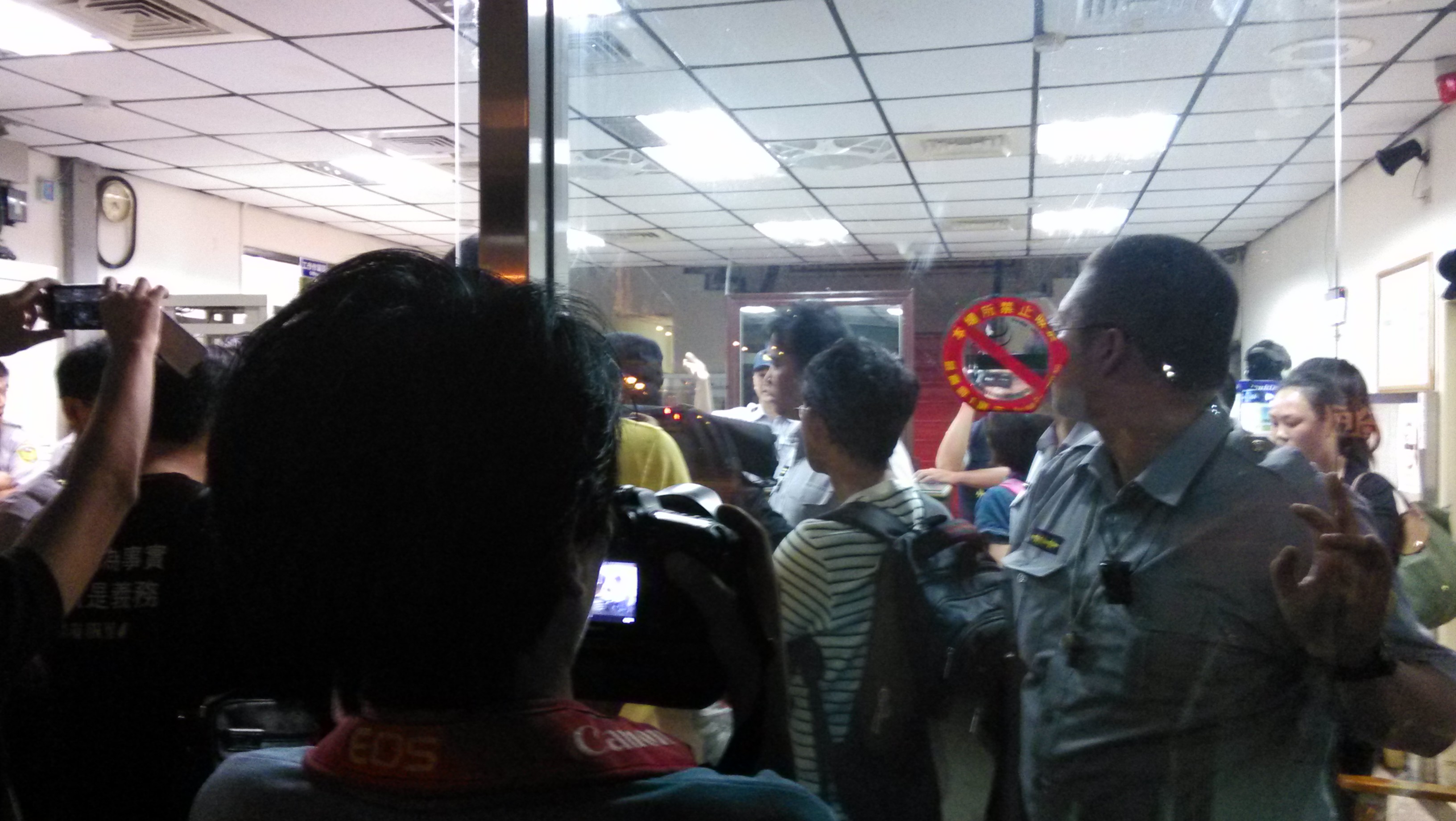
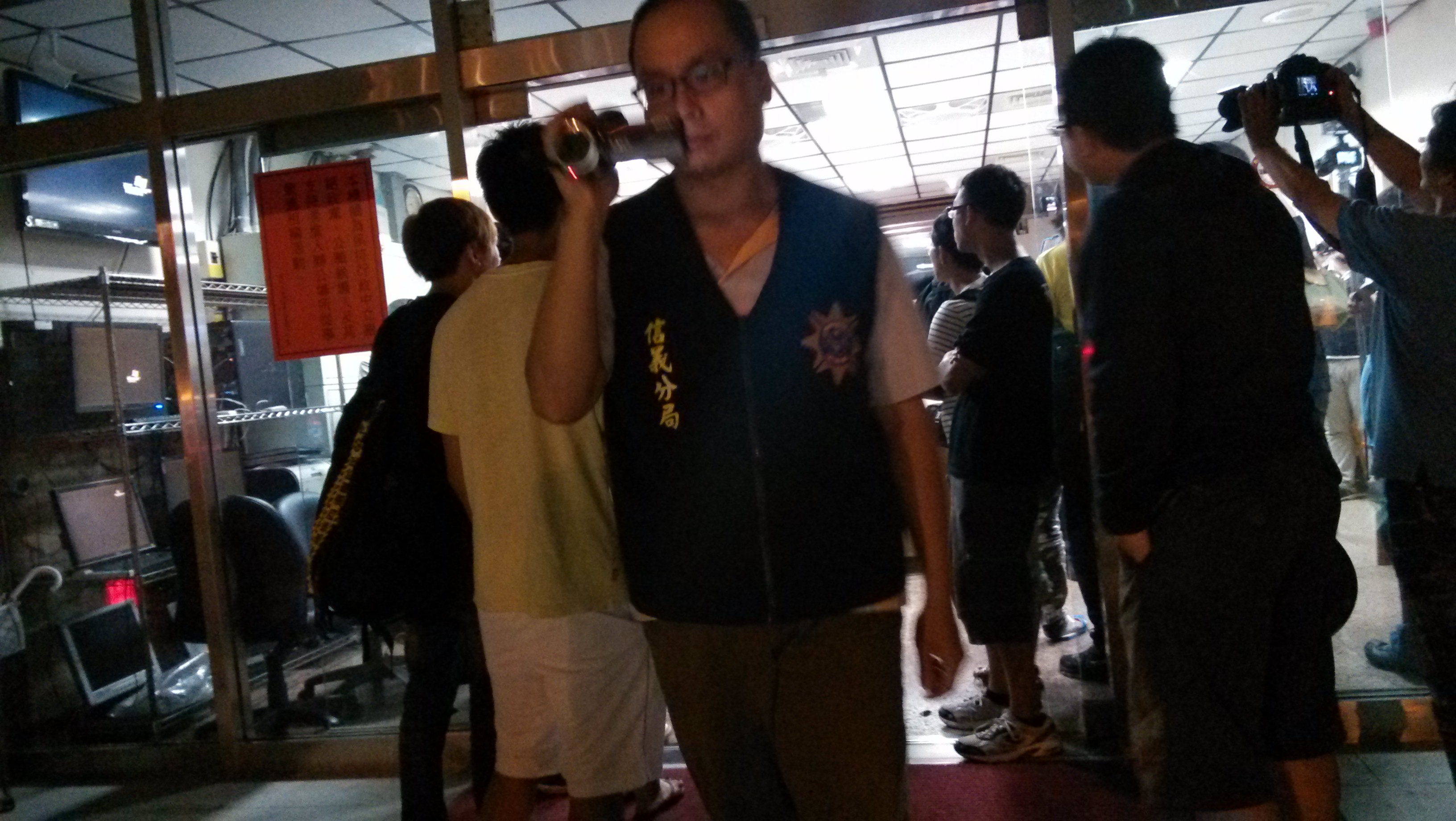
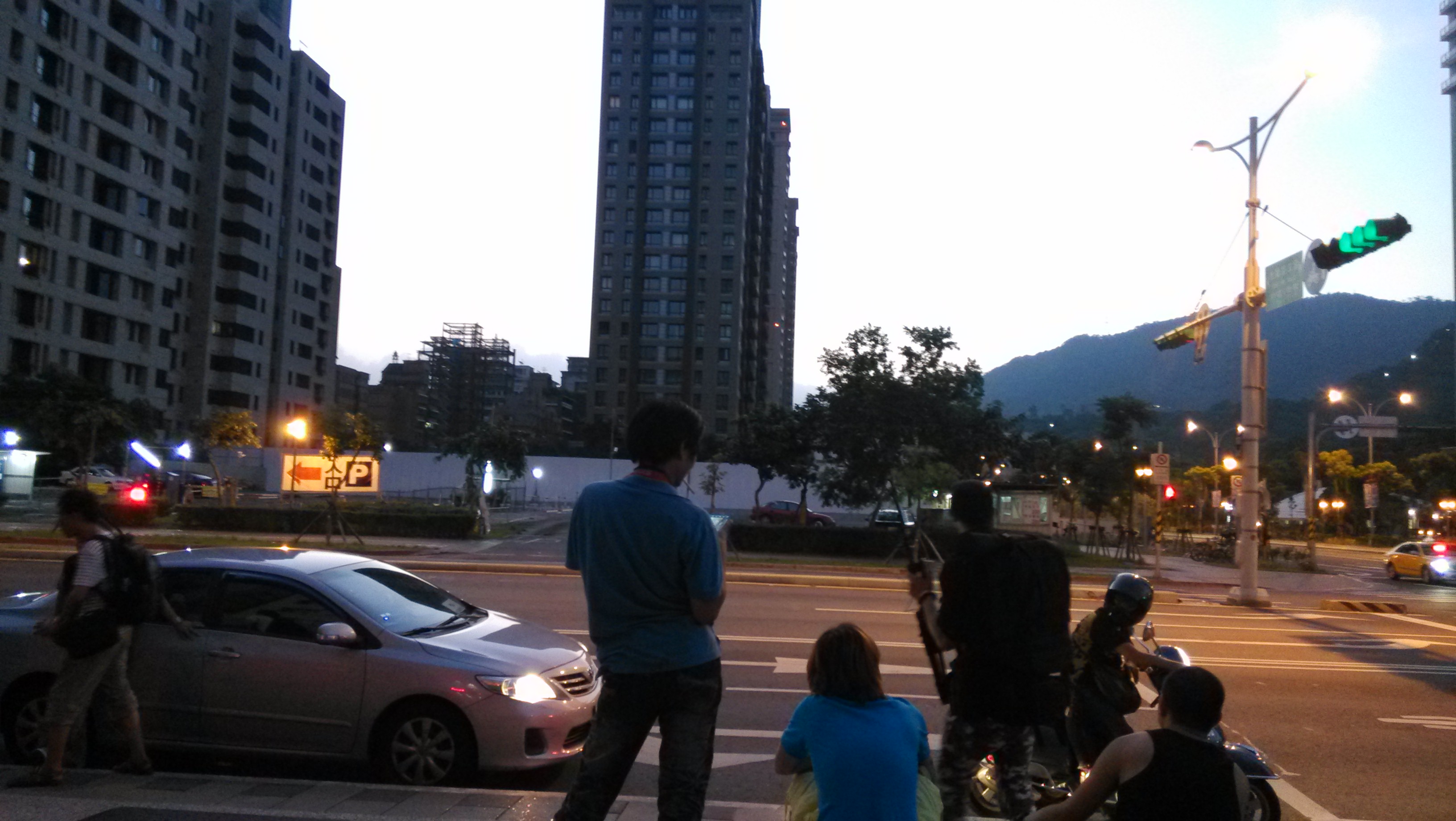
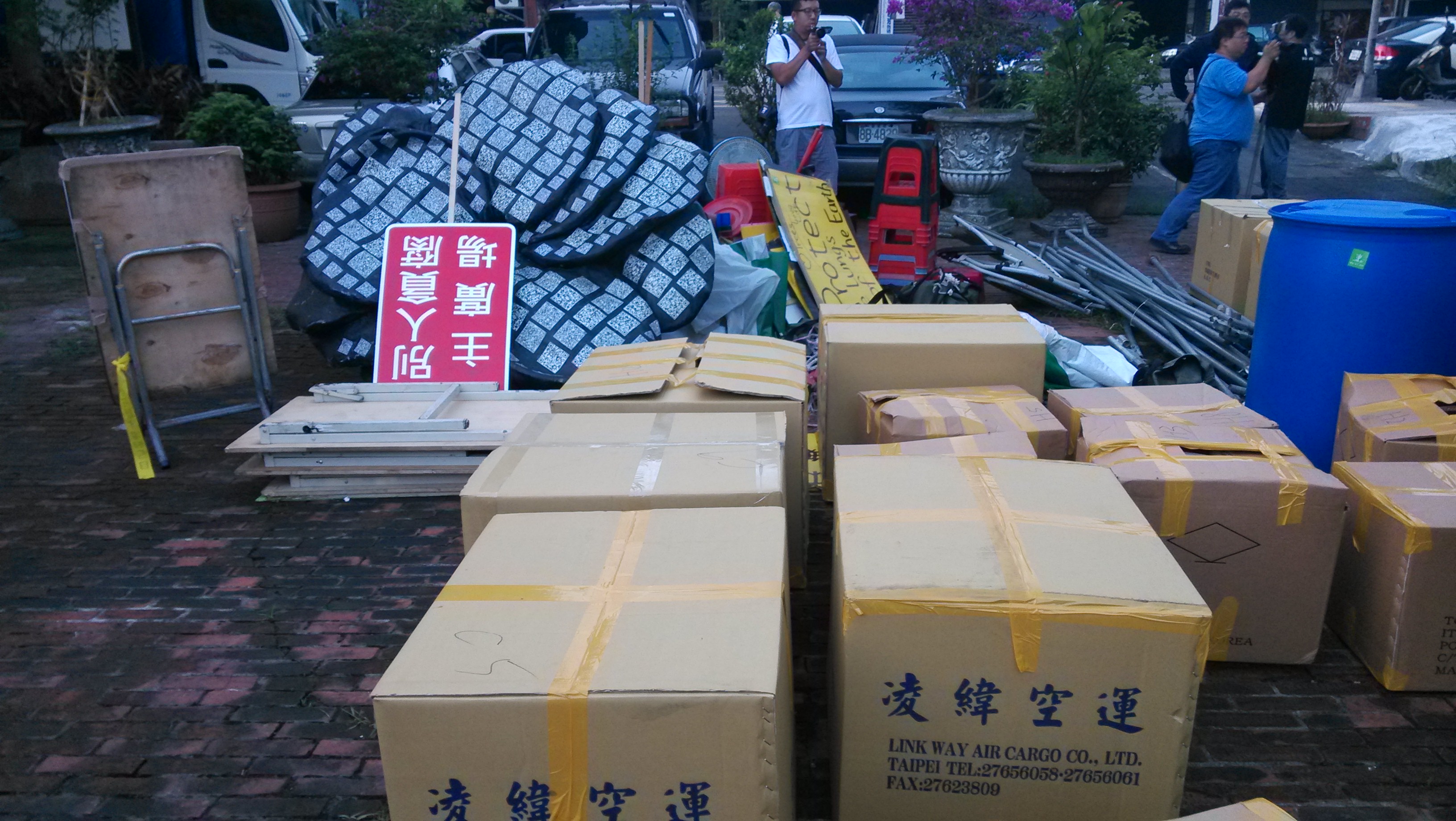
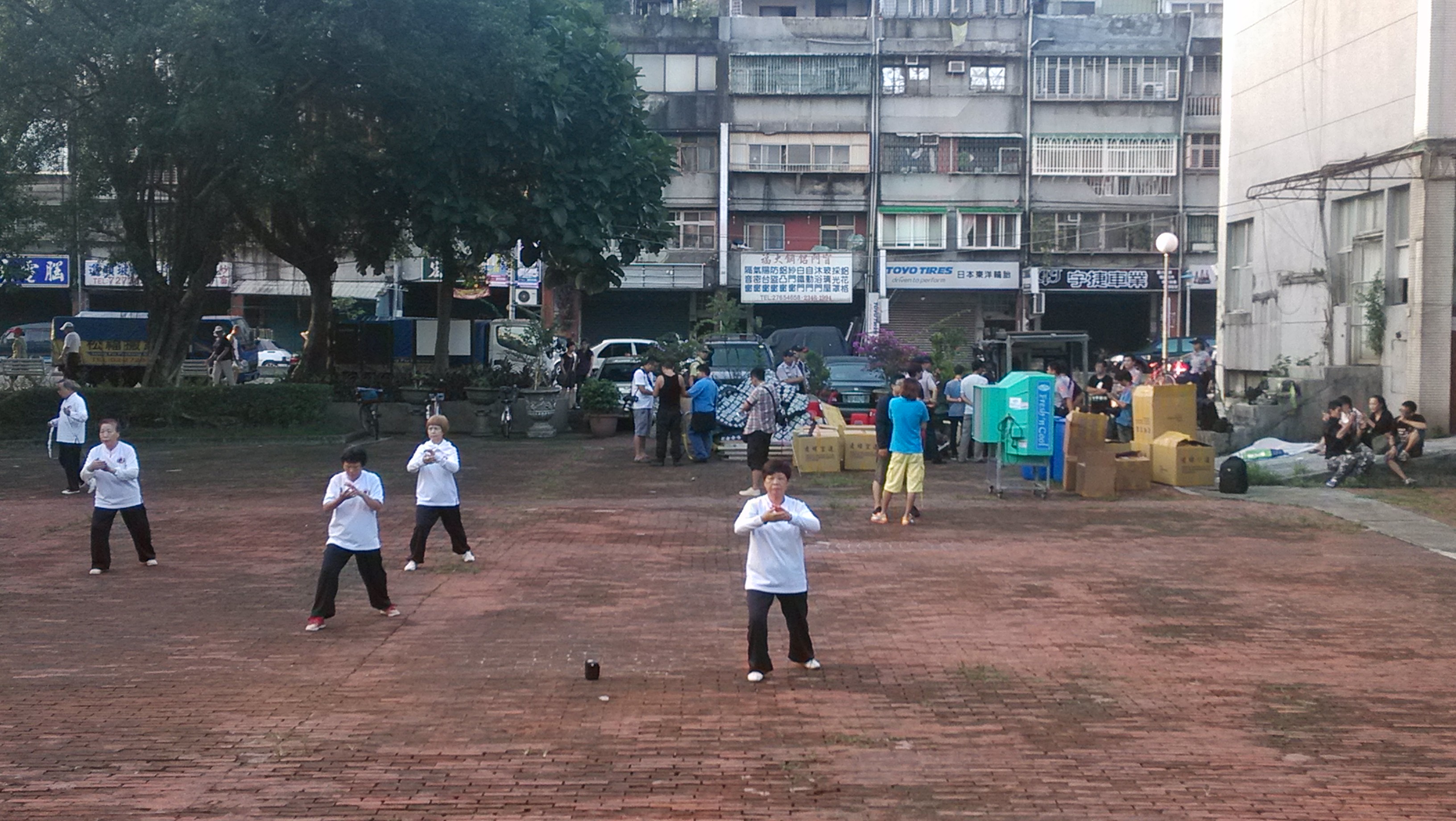
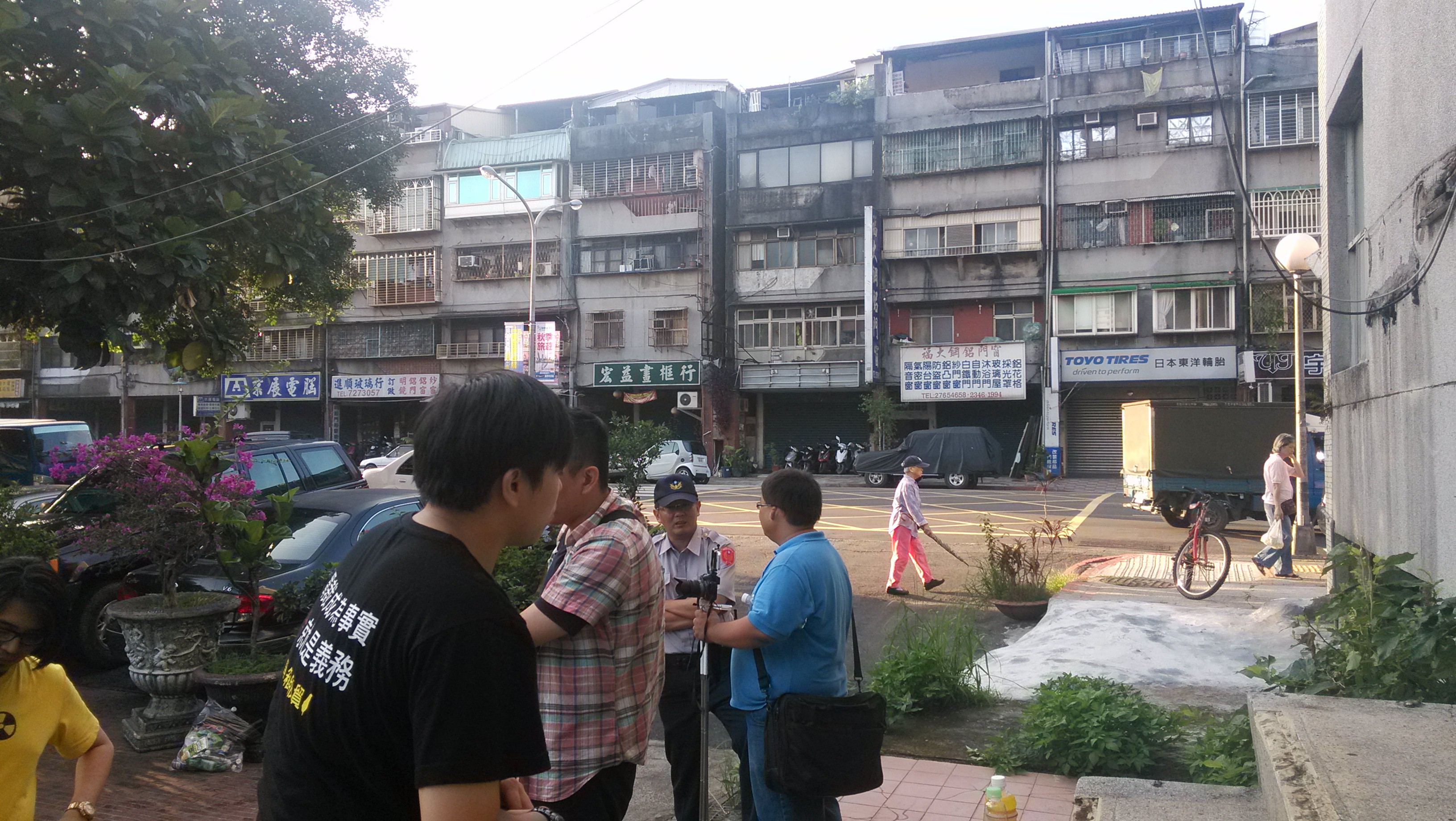
沒有留言:
張貼留言